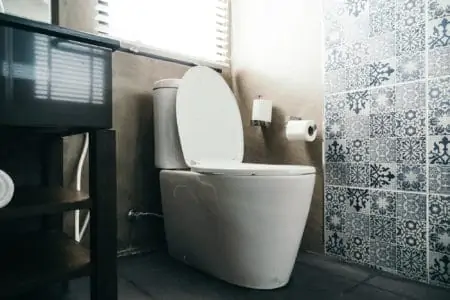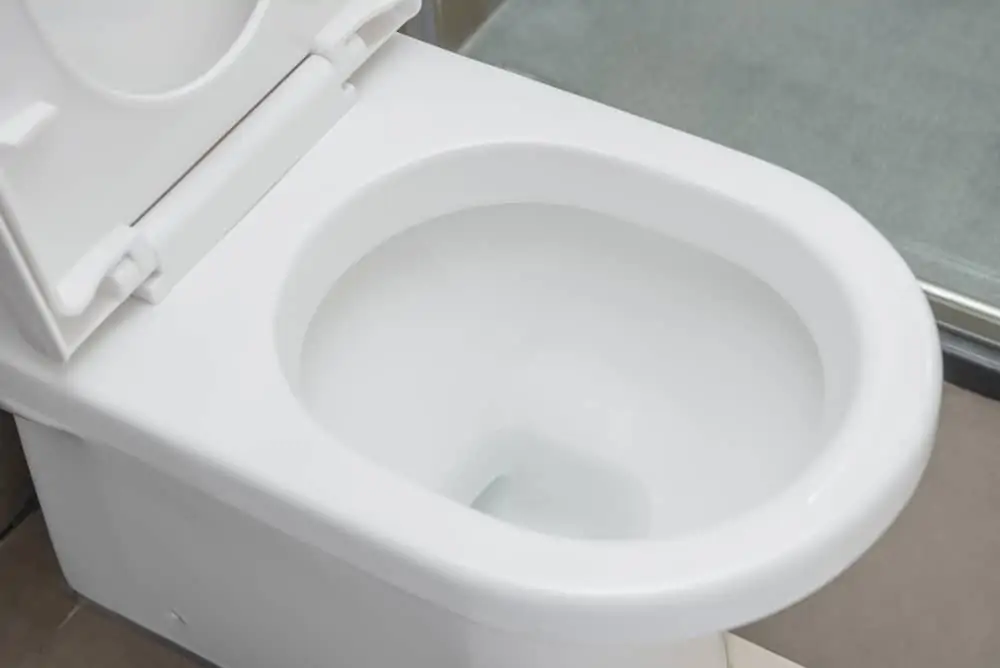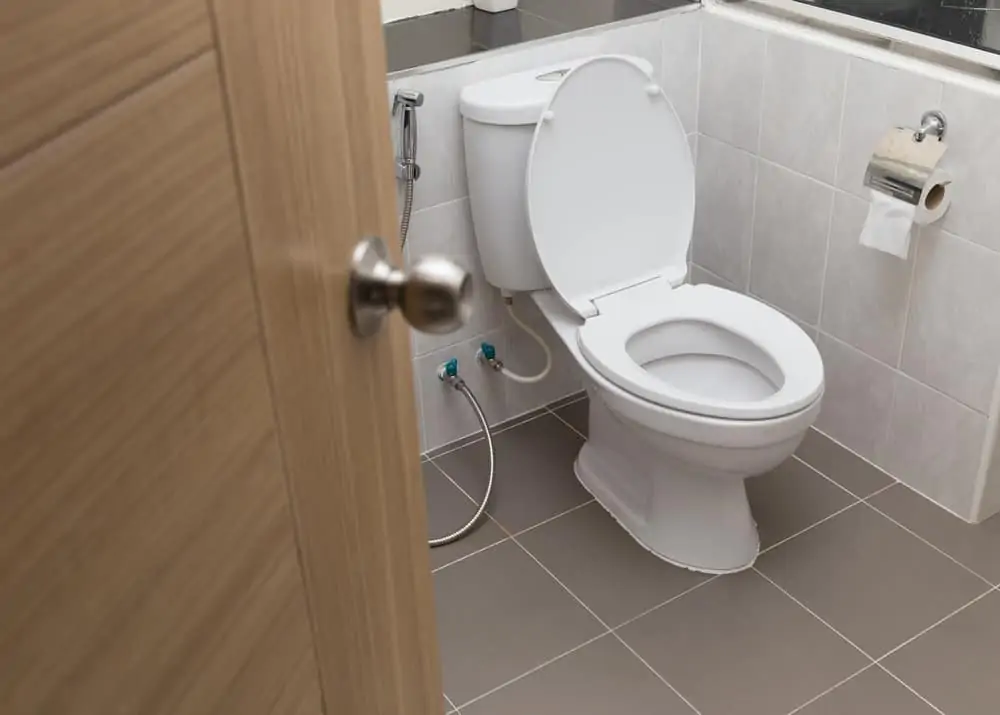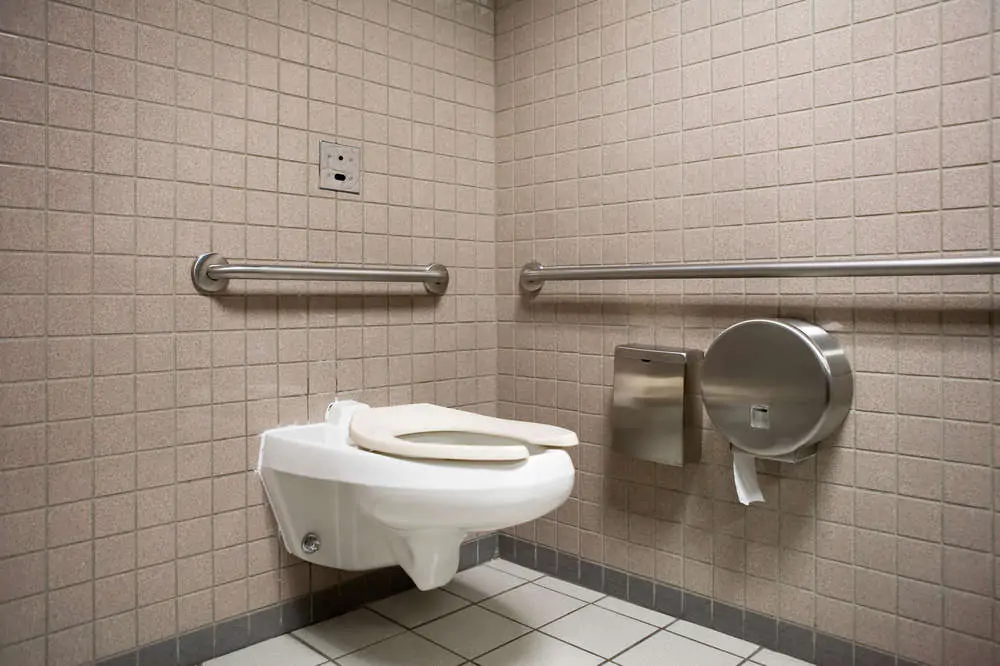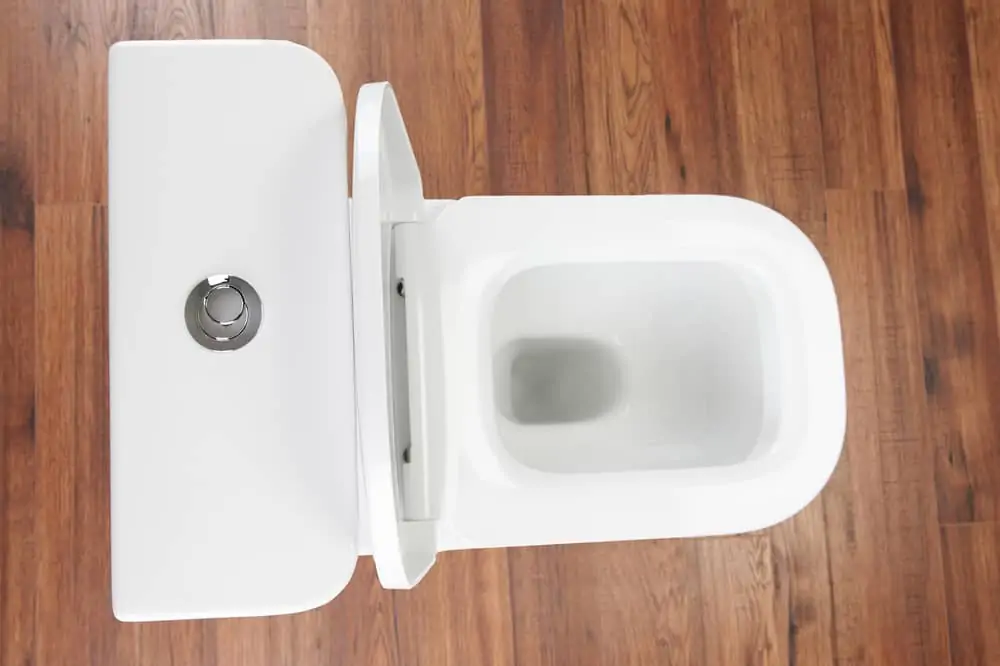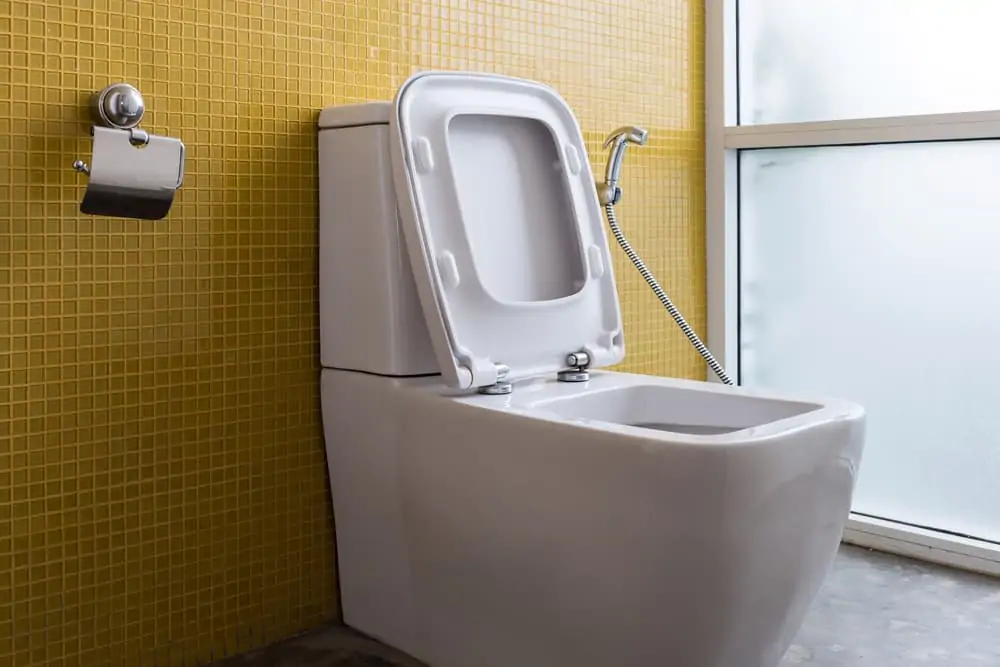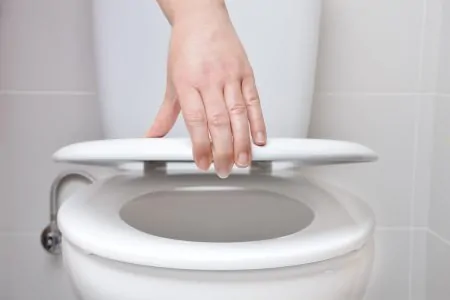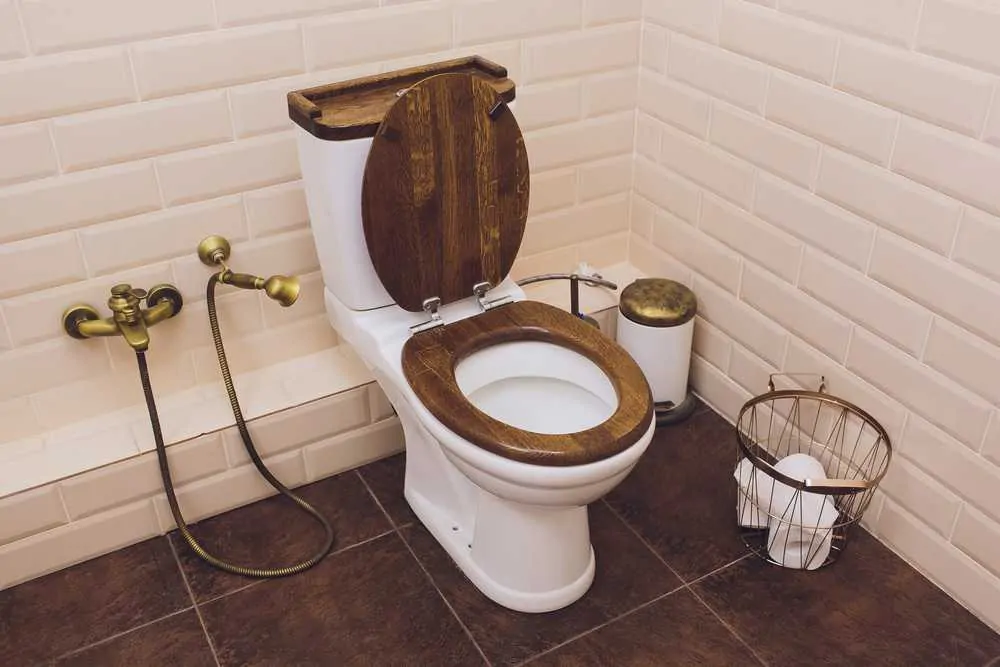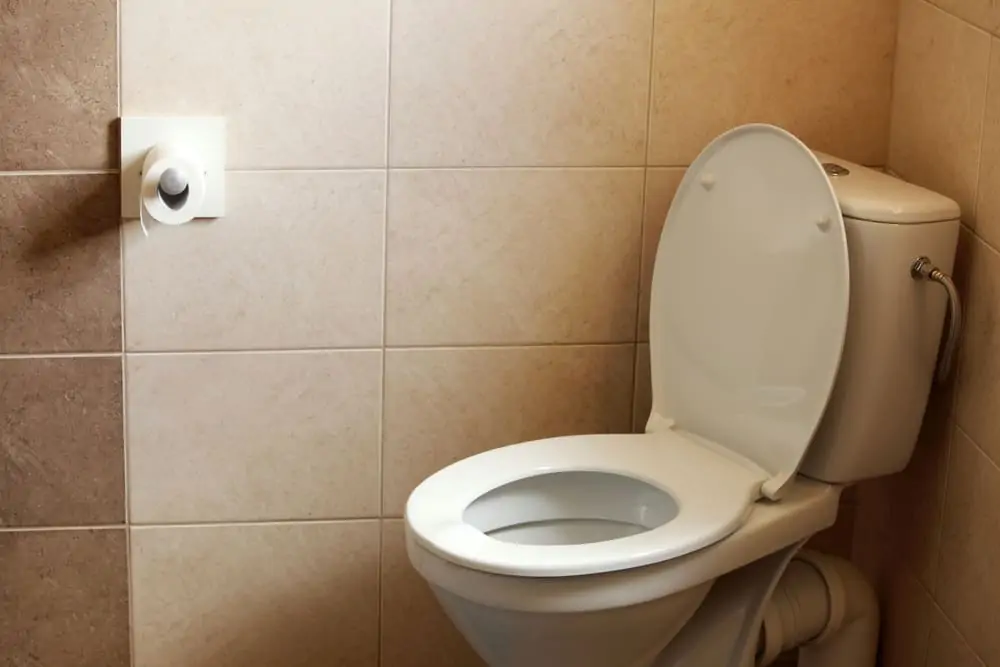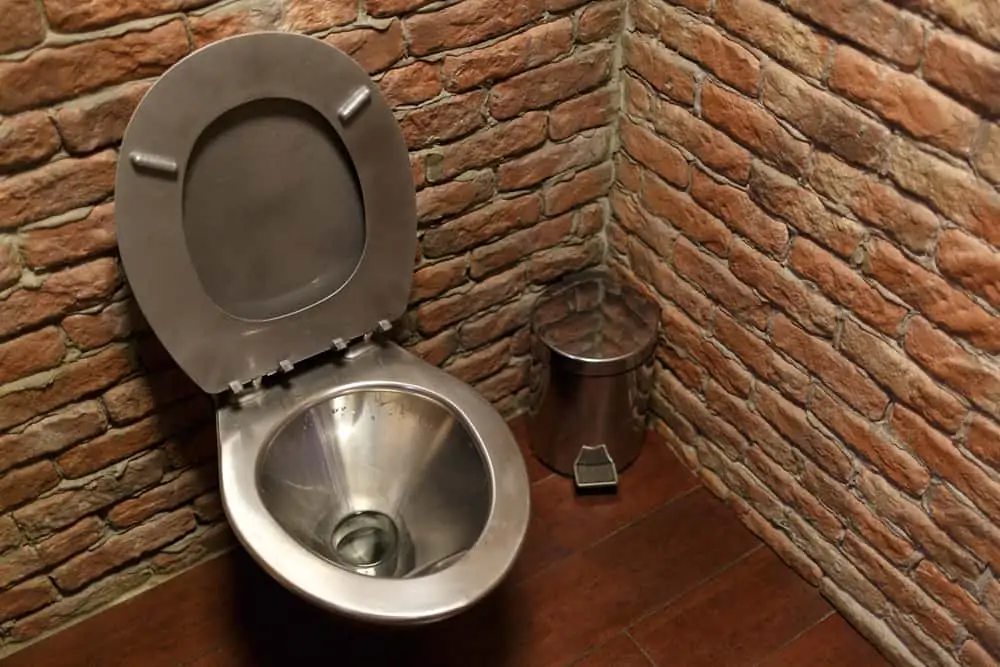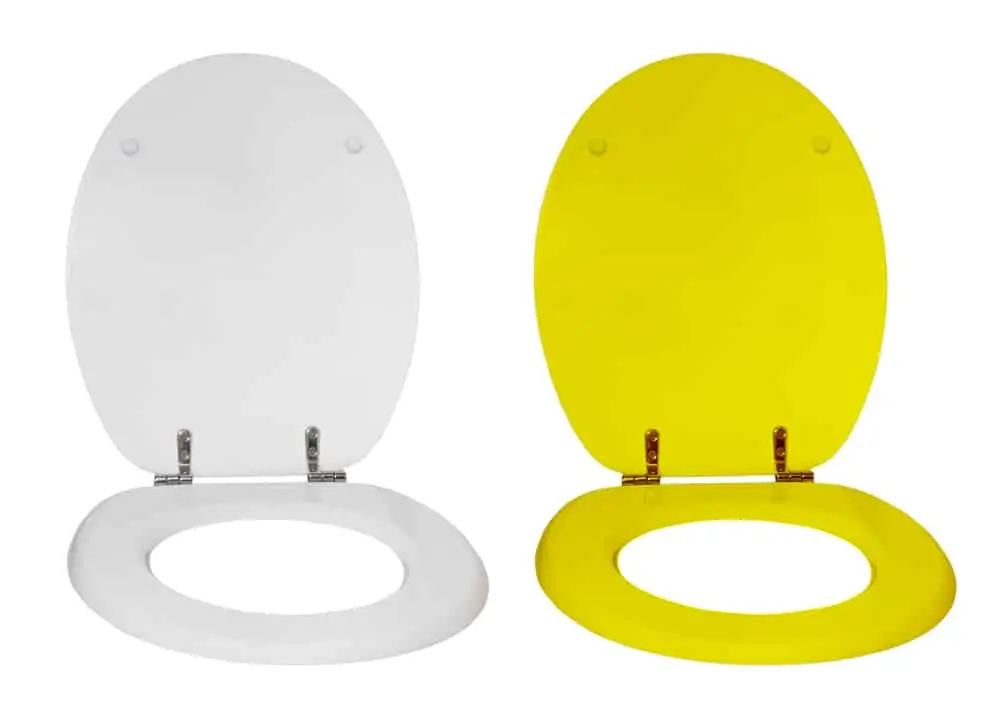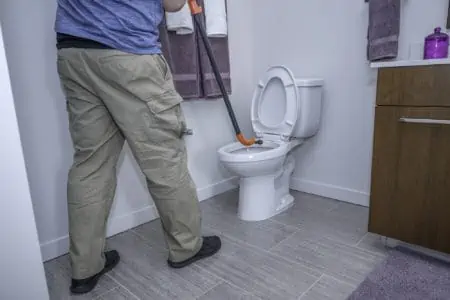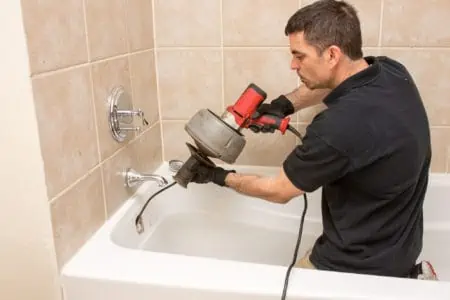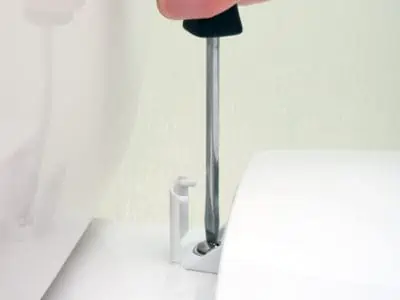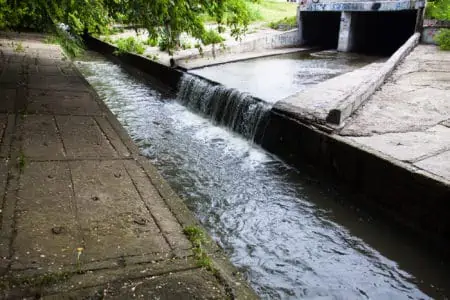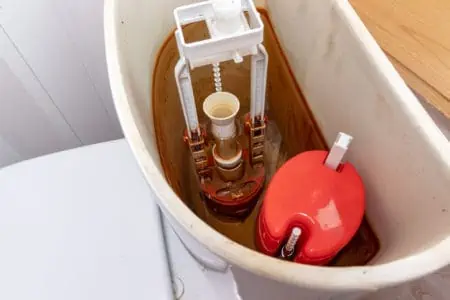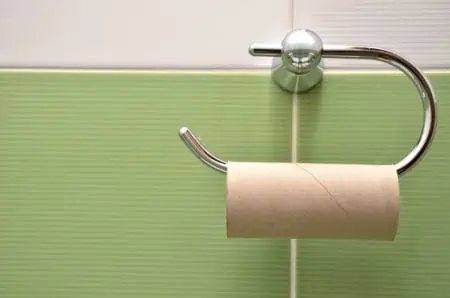What on earth can we possibly say about the humble toilet seat? It’s hardly a topic of conversation, right? Wrong! While your toilet may last 10 or 15 years, the seat wears out far quicker.
We look at the various types of toilet seats, what makes them unique, and examine the pros and cons of each model.
Key Takeaways
- Various toilet seat shapes: Round, Elongated/Oval, Open/U-Shaped, D-Shaped, and Square.
- Common toilet seat materials: Wood, Plastic, Stainless Steel, and Resin.
- Toilet seat features to consider: Standard Close, Soft-Closing, Raised, Heated, and Bidet.
- Choose a seat that’s comfortable, suitable for users, and has desired features for the best experience.
Toilet Seat Shapes
We bet you didn’t know there were so many toilet seat shapes. Buckle up as we reveal the many variations available.
Round
Round toilet seats were once the shape of choice, but the elongated version has overtaken it as the most popular style in recent years. Round seats are typically 16 or 17 inches in length from the mounting bolts to the front edge of the toilet.
Round seats fit round toilets, so they are space-saving because they extend less into the available floor area. Round seats are more comfortable for younger users because it gives them less space to fall through, and they are also cheaper to buy than other versions.
They tend to be the more traditional seat style, so you are unlikely to find a round seat in a state-of-the-art bathroom design.
Pros
- More comfortable for younger users.
- Better for larger posteriors.
- Cheaper to buy.
- Takes up less room.
- Traditional styling.
Cons
- Not comfortable for men to sit and pee.
- Harder to clean.
- A little old-fashioned.
Elongated/Oval
Oval toilet seats are typically 2 inches longer than round versions, so they fit elongated toilets that take up more floor space. They tend to be more modern in design, gracing less traditional bathrooms, and they have become the seat style of choice.
Elongated seats are better for larger people and men who like to sit to pee. That extra 2 inches makes all the difference! They are also easier to keep clean because there is a larger “target area” to aim for, so there are fewer splashes and spills.
You can expect your elongated toilet seat to measure 17 or 18 inches from the mounting bolts to the front edge of the toilet. These seats are more expensive to buy, and they do not suit every shape of posterior.
Kids find them more challenging because of the increased length, and some say they are not as comfortable as other designs.
Pros
- Better for men who like to sit and pee.
- Better for taller and larger people.
- Larger “target area.”
- Easier to keep clean and more hygienic.
Cons
- Less comfortable for children.
- Takes up more floor space in the bathroom.
- It costs more to buy.
Open/U-Shaped
These seats follow the same shape and design as oval models, with one difference: there is a cutout section at the front that gives it that unique U-shape.
The missing section is for hygiene reasons. It allows men to sit and pee without getting urine on the seat or under the seat rim. This makes them even more sanitary and far easier to keep clean.
It also prevents cross-contamination between users, which is why these seats are rarely found in domestic settings. You are more likely to see them in public conveniences: that and the fact they are not very stylish.
The other advantage of this toilet seat shape is when you wipe; there is more available space without your hand making contact with the edge of the seat.
Pros
- More hygienic.
- Fewer splashes and cross-contamination.
- More room to wipe.
- Better for men who sit and pee.
Cons
- Lacks style.
- Better for public toilets.
D-Shaped
D-shaped seats are fairly modern in design, typically found on sleek, minimalist-style bathroom suites. They are a particular favorite with wall-hung toilets like the ones you see in boutique-style hotel rooms.
The D-shape comes from a straight edge where the mounting bolts meet the toilet and a large curved front. They offer that angular look without compromising on comfort levels.
Square toilet seats are not a cheap option, costing many times more than other models. Plus, they are harder to source because so few toilets can accommodate the shape.
Pros
- Sleek and stylish design.
- Ideal for modern bathrooms.
- Best fit for wall-mounted toilets.
Cons
- Expensive to purchase.
- Harder to source.
Square
Square toilet seats are actually rectangular in shape with slight curves on the corners. They are unconventional and don’t look like they should work, but they do. Square toilet seats are definitely statement pieces and fit that sleek, minimalist bathroom design you see in top-end hotels.
You might think a square design is less comfortable to sit on, but they are just as usable as other seat shapes.
The main disadvantage with square seats is the cost. They cost considerably more than other styles, and they are also harder to source because so few toilets are compatible with the shape.
Pros
- Makes a statement in your bathroom.
- Unique style and design.
- Comfortable to sit on.
Cons
- Harder to source.
- Costs a lot more than conventional seats.
Toilet Seat Features
Another area where toilet seats differ is in the features and functions they deliver. They range from all singing and dancing bidet seats that do everything except serve you a coffee while using the throne room to ADA (Americans with Disabilities Act) compliance for seat height.
Let’s take a look at your options:
Standard Close
If you’ve ever been woken in the dead of night by a slamming toilet seat, that’s the standard variety. It has a hinge and a lid, so when you close the seat to sit, keep a firm grip, or it will slam down.
These seats come in both round and elongated versions, so you can choose the one that fits best with the users in your home.
These were once the most common type of seat and also the cheapest, but in recent years the soft-close seat has muscled in on the standard seat’s popularity. The good news is standard seats are readily available, so when you need a replacement, you will have lots of choices.
Pros
- Cheap to buy.
- Lots of choice and availability.
- Comes in elongated and round versions.
Cons
- The lid slams when you drop it.
- Lacks any features.
Soft-Closing
Ah, now we come to the toilet seat that guarantees a good night’s sleep. How? Your family and house guests won’t be slamming it in the middle of the night and waking you.
These seats have special hinges that utilize tension to stop them from slamming and the lid to close slowly. Just give the seat a gentle push, and it closes on its own. They also stop your children from getting their fingers trapped beneath the rim as it slams.
Soft-close seats have become the norm on most new toilets, with people actively seeking them out, so what was once a selling feature is fast becoming the standard in toilet seat closing.
They come in most shapes and are readily available, so you have a vast array of choices. If we had to nit-pick one very minor fault, soft-closing toilet seats are very slow to close.
Pros
- Lots of choice and availability.
- No more slamming seats.
- Safer for children to use.
- Closes on its own.
Cons
- Takes an age to close fully.
Raised
Raised seats meet the ADA guidelines for height, measuring between 17 and 19 inches from the base to the top of the seat. The higher position means they are better for those who are less mobile and the older generation.
Standing and sitting are easy for most adults, but imagine if such a simple act was a challenge. Those few extra inches in height put less strain on joints, enabling a greater level of independence.
These toilet seats come in all shapes and sizes and are often referred to as comfort height seats. You can buy universal height seats, which can take the seat height up to 19 and even 21 inches.
The downside is a comfort height toilet seat is not suitable for shorter people, and children struggle to use them.
Pros
- More comfortable for elderly relatives.
- Better for those with mobility issues.
- Ideal for taller people.
- Meets ADA guidelines.
Cons
- Not suitable for shorter people.
- Not ideal for some children.
Heated
Nothing says happiness more than a warm backside. Imagine it’s the middle of winter, and that toilet has been coping with sub-zero temperatures. The shock to your system when you sit down makes you draw in a sharp breath.
Simply flick a switch, and you get instant heat, and the great news is you can get programmable models, so every family member can set the seat to the temperature that best suits them. Also, many come with a built-in light to make nighttime peeing more atmospheric.
Thanks to Japanese ingenuity, the heated toilet seat was born, but it wasn’t long before the idea caught on in the US. If you live in the Alaskan wilderness, a heated toilet seat is a real luxury. The heated seat fulfills that desire for ever more features and comforts as the toilet moves with the times.
Heated seats come in all shapes and sizes and cater to almost every design of toilet. However, they are expensive compared to standard seats, and they require a professional to fit them because they connect to an electrical supply for the heating element.
Pros
- Ideal for use in colder climates.
- Instant heat.
- Programmable settings.
- Comes in all shapes and sizes.
Cons
- Expensive to purchase.
- More complex to install.
Bidet
Bidet toilet seats are another Japanese innovation. They attach to your existing toilet and turn it into a working bidet. They range in features from heated seats, warm-air drying, multiple water jets, feminine hygiene, and a light.
As you might expect, all these extra functions come at a price, and bidet toilet seats are not cheap. They can cost a few hundred dollars up to $1,000 plus.
These toilet seats require a professional to perform the installation, which is an added expense; plus, they are so complex that you are more likely to suffer from a malfunction.
The Japanese believe that bidets bring the highest level of sanitary hygiene, which is why they have bidets in almost every setting. They are growing in popularity in the US, but it is a slow climb given their price.
Pros
- Complete washing experience.
- Lots of other features.
- Universal, so they fit most makes and models.
- Extremely hygienic.
Cons
- Very expensive to purchase.
- Require a professional to install them.
Toilet Seat Materials
Several materials are used to make toilet seats, from cheap plastic to funky resin, with wacky colors and designs.
Wood
The wooden toilet seat has been around for years and is still as popular today. Wooden seats can be stained any shade or painted any color to suit your bathroom design, and you can choose between high gloss to matte finishes.
A wooden toilet seat also keeps the warmth better than some other materials, so in the dead of winter, you might be thankful you have a wooden one rather than a metal one.
The most popular seats are bamboo, MDF, or natural wood. The downside of a wooden toilet seat is it damages easily, and once the varnish wears away, it is susceptible to mold and mildew growth.
Also, if you use the wrong detergent, it can stain and damage the surface of the wood. They also age badly compared to other materials. Some even split if they are not maintained properly.
Pros
- Can be stained any shade.
- From matte to gloss finish.
- Hold their warmth.
- Comfortable to sit on.
Cons
- It takes a lot of maintenance.
- Susceptible to harsh detergents.
Plastic
Plastic is easily the cheapest of the materials used in toilet seat construction. Typically, they are plain white, but you can get several color variations. They have the advantage over wooden seats because they are easier to keep clean, and they don’t rot like wood. The disadvantage of plastic seats is they can look cheap, and some are super-flimsy; plus, plastic ages badly, as the seat yellows and scratches.
Plastic seats are among the most popular with manufacturers and the general public, so it is likely to be the type of seat your new toilet comes with as standard. They are also readily available, with a vast amount to choose from.
Pros
- Cheap to buy.
- Easy to keep clean.
- A popular choice with the public.
- Low maintenance.
Cons
- Plastic ages badly.
- Looks and feels cheap.
Stainless Steel
Stainless steel toilet seats are more typically found in public toilets because they are hard-wearing and easy to keep clean, as well as resist rust. They have a more industrial feel to them, so they are unlikely to be the seat of choice in your bathroom unless you were aiming for a particular style.
Stainless steel is the most robust of all the materials featured, with the seat probably outlasting the toilet. However, unless you want a seat that can survive a nuclear attack, there aren’t many reasons to own one.
They are cold to the touch, even in the summer, so imagine the shock to your system in the middle of winter, and they are not the most comfortable material to sit on. You won’t be locking yourself away for hours to read the Sunday papers.
Pros
- They are hard-wearing.
- Easier to keep clean.
- Resists rust.
Cons
- Always cold, even in the summer.
- Uncomfortable to sit on.
Resin
Resin seats are the most fun of the bunch. They usually come in bright colors and designs, with the most popular being the goldfish or shell pattern. Resin is hard-wearing, dries rock hard, and enables you to customize your toilet seat to suit your moods.
Imagine having a Halloween seat or a Christmas version? Imagine the indulgence of having a toilet seat for all seasons and celebrations?
Resin is wipeable, so it is easy to keep clean and resistant to mold and mildew. You can also use standard detergents, and they won’t scratch or pit. Resin seats are also lighter than wood and plastic.
For some, novelty is a byword for bad taste, so the fun appeal of a resin seat may not be for everyone.
Pros
- Lightweight and durable.
- Comes in bright colors and designs.
- Customize your seat.
- Easy to keep clean.
Cons
- More like a novelty toilet seat.
It’s the Seat That Counts
Just think about all the effort people place in choosing the right toilet, but actually, it’s the seat that counts. The seat has to be comfortable, suitable for its audience, and come packed with features. The toilet can’t deliver all these things, but the seat can. So, as that crusading Knight said to Indiana Jones in the third movie when selecting the Holy Grail, “Choose wisely.”
